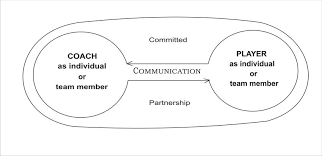In 1980, country music entertainer Dolly Parton wrote and performed the song “9 to 5” for the comedy film of the same name. The song became an anthem for workers in the United States, as many employees tackled each workday from 9 to 5. I was ten years old when the song was released. It may have seemed odd to some, listening to a ten-year-old inner-city black girl belt out, “working nine to five, what a way to make a living,” as she cooked breakfast for her three little brothers before walking them to school. In my loud off-key alto voice, I knew each word of that song and the importance of going to work. I watched my single mother leave the house Monday through Friday at 8:00 a.m. to be on time for her 9:00 a.m. job as a clerical assistant.
In Ben Witherington III’s book Work, A Kingdom Perspective on Labor, he shares that God created us to work, know the purpose and worth of all our work.[1] A young Christian mother taught her four children the power and purpose of work. God’s plan always included human beings working. God created work when he placed Adam over the garden of Eden in Genesis 2.
“The Lord God took the man and put him in the Garden of Eden to work it and take care of it (Genesis 2:15).
We were created to work, so what does one do when work is unavailable, or the opportunity to work is removed?
What happened to the 9 to 5 employees?
In 2020, a global pandemic changed the trajectory of employment for millions of people worldwide. Over 41 million American workers filed for unemployment between February and May 2020, and Congress approved $2.4 trillion in relief bills to combat the financial fallout due to COVID-19.[2]It is now August 2021, and many states have begun to announce that unemployment benefits will be restricted because jobs are available? The federal, state and local governments are vocalizing that there are jobs. It may not be the same job, or career one had before, but it is a job.
Is it that easy for a person to transition into any job, especially one different from the job held before the global pandemic and economic crisis? Many are like my mother; she wanted to work and provide for our family. Theodore Roosevelt said it well, “The best prize that life offers is the chance to work hard at work worth doing.” If my mother were suddenly unemployed, would an employer give her a chance instead of evaluating her lack of experience?
What is Coaching and Where Does it Come From?

When most are asked about coaching, they think of athletic coaching, which is not far off from the etymology and meaning of coaching. Coaching is a practice where one person comes alongside another person to help them achieve personal and professional goals. Coaching is a client-centered therapy where clients are not diagnosed but treated with respect and allowed to take the lead in shaping the purpose and direction in the coaching process.[5]
A professional coach guides a “trusted learning partnership” where the client can achieve personal and organizational performance objectives.[6] Coaching is a form of professional development that involves helping others. Let us look at how organizations can provide coaching to catapult the unemployed back to work successfully.
Coaching A Culture Back to Work

When people lose a job and are unemployed for an extended period, it can cause psychological and financial trauma, and the two are closely intertwined, says Carl Van Horn, Ph.D., a professor of public policy and an expert on workforce and unemployment policy Rutgers University.[7]
According to the Congressional Research Service:
- In April 2020, the unemployment rate reached 14.8%—the highest rate observed since data collection began in 1948.
- In April 2021, unemployment remained higher (6.1%) than in February 2020 (3.5%).
- The labor force participation rate declined to 60.2% in April 2020—a level not seen since the early 1970s—then began a partial recovery in May 2020.[8]
As the United States begins to reopen, the unemployed must return to a different 9 to 5. These applicants will need guidance, support, and development; emotional change required for organizational transition requires hardwiring Human Resource Departments to learn how to merge in the new employee. Coaching can provide insight and action, so the transition of the unemployed into new workspaces is successful.
The bible shares in (Ecclesiastes 4:9-10), “Two are better than one because they have a good return for their work: If one falls, his friend can help him up. However, pity the man who falls and has no one to help him up!”
The coaching practice is a belief in helping people. Studies have shown that coached people can learn up to six times more information through the coaching process.[9] Organizations can follow the following guideline to get new employees started with coaching:
- Ensure the entire organization and new employees are educated about coaching to increase the chances of usage. A professional coach can conduct a 60 or 90-minute training workshop on professional coaching for all stakeholders.
- The must be structure and clarity on how coaching will work within the organization—reiterate that it is not a punitive practice and optional.
- Organizations should have an onboarding coaching process that is standard practice at each level of the organization.
- Create a coaching culture within the organization by removing any roadblocks that may hinder the process. Example allow time for employees to meet with the coach, provide a comfortable location for the sessions, and make it a judgment-free zone.
It will benefit new and seasoned employees to have a person to talk openly about workplace challenges and expectations.
Conclusion
As Christians, we understand that the call to work is essential in God’s plan for his creations. Work is a vital part of our purpose and mission on earth. Humans can experience the feeling of not knowing what to do after losing a job or career due to unforeseen circumstances. Our God-given purpose has a goal, and it involves working when physically and mentally able and working hard for the Kingdom of God.[12]
Coaching is a professional development practice that will allow organizations to comfortably hire applicants like my mother, that enjoyed working but would need extra support to adjust to a new job or work environment. Understanding the concept of work and having the tools to connect to employment has been devastating for many.
Coaching is a new way of leading. It relates to performance improvement in a specific skills area. The life of Jesus shows us the importance of developing others capable in other areas, but we need to understand the—way to eternal life through Jesus Christ. Coaches evoke awareness and facilitate the growth of the client. Effective coaching can be inspirational, motivational and inspire individuals to walk confidently into a new employment opportunity.
[1] Witherington, B. (2011). Work: A Kingdom perspective on labor.
[2] Wilson, Jenna M. MS; Lee, Jerin MS; Fitzgerald, Holly N. MS; Oosterhoff, Benjamin PhD; Sevi, Bariş MS; Shook, Natalie J. PhD Job Insecurity and Financial Concern During the COVID-19 Pandemic Are Associated with Worse Mental Health, Journal of Occupational and Environmental Medicine: September 2020 – Volume 62 – Issue 9 – p 686-691
[3] Wildflower, L., & Brennan, D. (2011). The handbook of knowledge-based coaching: From theory to practice.
[4] Wildflower, L., & Brennan, D. (2011). The handbook of knowledge-based coaching: From theory to practice.
[5] Wildflower, L., & Brennan, D. (2011). The handbook of knowledge-based coaching: From theory to practice.
[6] Crane, T. G. 2010). The heart of coaching. San Diego, CA: FTA Press.
[7] Pappas, S. (2020, October). The toll of job loss. Monitor on Psychology, 51(7). http://www.apa.org/monitor/2020/10/toll-job-loss
[8] Unemployment Rates During the COVID-19 Pandemic. (n.d.). Retrieved May 22, 2021, from https://crsreports.congress.gov/product/pdf/R/R46554/10
[9] Rock, D., & Donde, R. (2008). Driving organizational change with internal coaching programs: Part two. Industrial and Commercial Training, 40(2), 75-80. doi:10.1108/00197850810858901
[10] Ogne and Roel, Transformissional Coaching.
[11] Rock, D., & Donde, R. (2008). Driving organizational change with internal coaching programs: Part two. Industrial and Commercial Training, 40(2), 75-80. doi:10.1108/00197850810858901
[12] Witherington, B. (2011). Work: A Kingdom perspective on labor.

